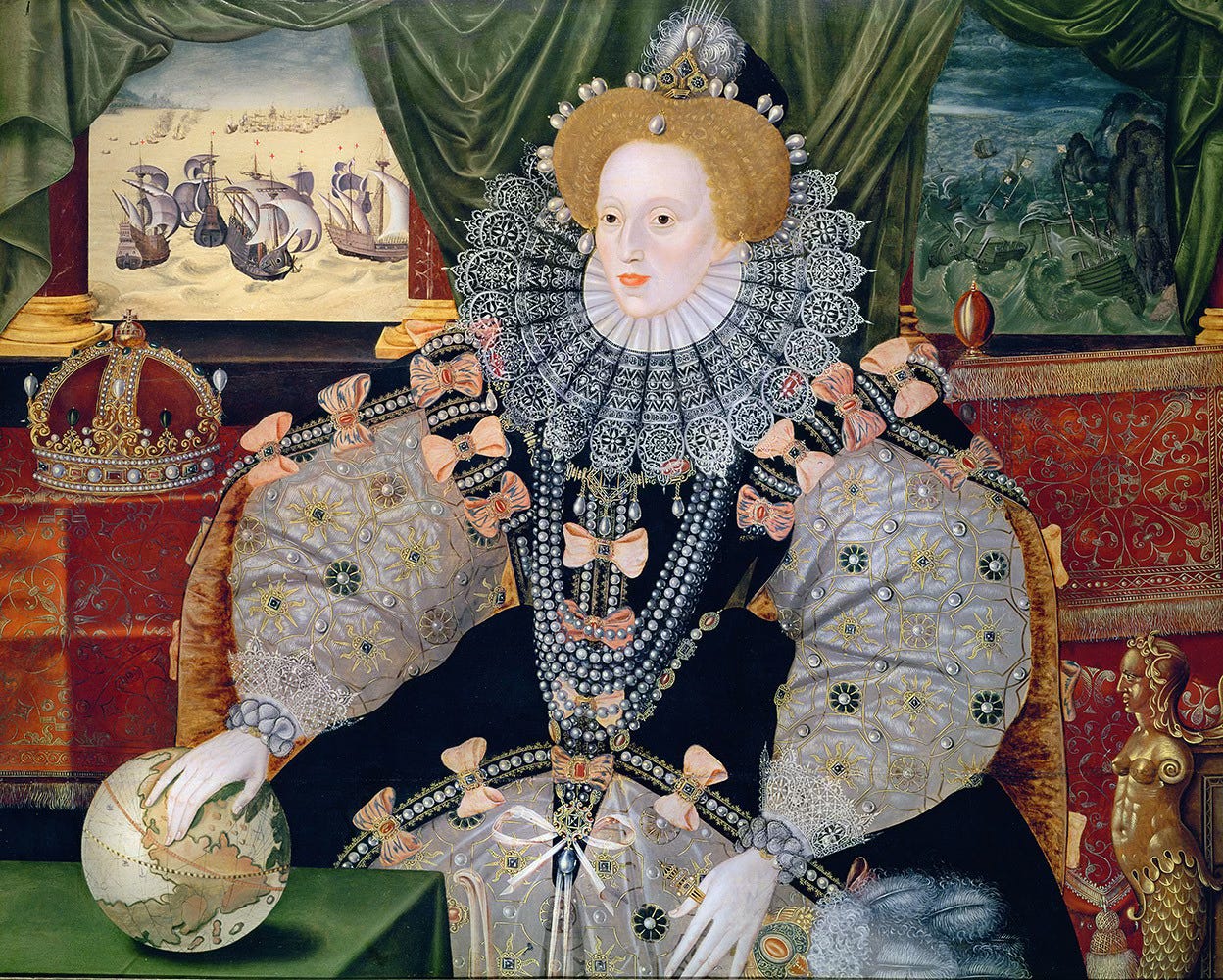This is a book about the public and private Elizabeth I: not only does the author explore her complex personal life, but also her techniques of holding and exercising power and her diplomacy, always mixed together. She is examined with a depth that never romanticizes this remarkable leader.
The story begins with a frightening look into the battle for succession. Her half-sister, Bloody Mary, was attempting to re-convert the country with ruthless brutality to the Catholicism of her mother, whom Henry VIII divorced to marry Anne Boleyn, Elizabeth I's mother. Thus, Elizabeth I faced not only the normal suspicion of treasonous intent between bitter blood rivals with a personal twist, but also was open in her Protestantism during one of the bloodiest epochs of the Reformation. While Elizabeth I survived and was crowned as queen, the legitimacy of her claim was always under threat – her difficult though charismatic Catholic cousin, Mary Queen of Scots, served as a living reminder of how easily she might be replaced on the throne. Elizabeth I survives, of course, and more or less triumphs over all her adversaries, but she was never bloodthirsty.
Behind this basic plot, Somerset masterfully dissects the machinery of government of the time. As an absolute sovereign, Elizabeth I had the last word, but she relied on a series of deeply trusted advisors as well as a network of courtiers, with whom she forged extremely close (perhaps physical) relationships. They form a fascinating backdrop as the story unfolds with their attempts to manipulate while serving her. It is as complex as a Shakespearean drama and yet Somerset is wonderfully even-handed in her treatment of them all, from William Cecil and Robert Dudley to the deranged and dangerous step son of Dudley. Elizabeth I's missteps, pride, and personal need for attention and love are critically covered in just the right level of detail: not academically over-exhaustive, but satisfyingly complete nonetheless. After reading this, I went to the National Portrait Gallery in London and immensely enjoyed looking at paintings of virtually all of the characters.
Finally, the finances of the Kingdon, so interlinked with the patronage system she managed to keep her aristocrats happy, are explained. There is also a clear explanation of Elizabeth I's carefully engineered religious compromise as embodied in the Anglican Church.
Then there are the details of Elizabeth I's diplomacy: she held out the prospect of marriage as a tool for this, ever enticing suitors, but never quite committing. It was a brilliant balancing act, in which she often felt personally vulnerable and perhaps even hopeful of finding a love match, while ever cunning and manipulative. This was perhaps the most fascinating for me, with characters surpassing her courtiers, such as the Duke d'Anjou, who preferred men and was later a transvestite before being murdered as the French King. But there were scores of others, including Philip II, her great rival in Spain and former brother-in-law, whose Armada she crippled to make England a true world power with new naval techniques.
This is a masterpiece of popular scholarship, beautifully written, and elegantly subtle as well as demandingly critical. It is the perfect supplement to those who enjoyed Cate Blanchett's Elizabeth. The only thing that I would have wanted in this is a more in-depth cultural explanation of the Age she was identified with, but that would be a book in itself.





I thoroughly enjoy your reviews. However, I’m astounded by the volume of reading you must do to complete the quality summaries. Thank you.